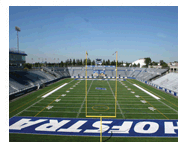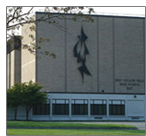Supporting A Special Field Of Dreams
Todd Frazier recently retired from baseball. He impacted the game for a number of seasons, including stints in New York for the Yankees and the Mets. Nearby, though, in his hometown of Toms River, New Jersey, he has had a more significant impact on the lives of many children and adults.
A Field of Dreams has been created in the community. The RWJBarnabas Health Field of Dreams is a one-of-a-kind athletic complex where children and adults with special needs are welcomed to enjoy the game and engage in other fun in a safe environment. With Todd’s support, and the support of many others, the concept that was just a thought by Christian Kane five years ago recently was unveiled for the community. Christian developed his idea for his 11-year-old son, Gavin, and many others.
On July 12, 2012, Christian’s vehicle was struck by a beer truck. He was not injured, but Gavin suffered a traumatic brain injury. While doctors suggested placing Gavin in a long-term care facility, Christian and his wife, Mary, decided to take Gavin home and begin the rehabilitation process. Gavin cannot walk independently and he communicates through a tablet. Otherwise, he is the same as any other child. When Gavin was about five or six years old, his parents researched a special needs baseball league. Unfortunately, the closest league was almost 90 minutes away.
This was unacceptable to the Kane family, considering that Toms River has such a huge youth baseball program. So, Christian decided to start his own program and build a special needs complex. The plan included a playground, basketball court and additional facilities. He then reached out to Todd, a hometown baseball hero, who made an immediate financial ($50,000) and personal commitment to the project. The Todd Frazier Special Needs Baseball League at the complex opened this past April 30. Gavin took the mound and tossed the ceremonial first pitch to Todd.
The many smiles and helping kids swing the bat touched Todd. The field is within walking distance of his home, and he plans to visit often to have fun with the boys and girls.
The complex remains unfinished for daily activities. While the Kanes have raised $3.6 million, another $300,000 is required to compensate for pandemic setbacks and inflation. The Kanes keep moving forward with their dream. They know that if you build it, they will come.









